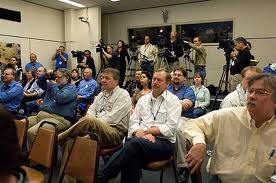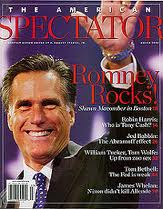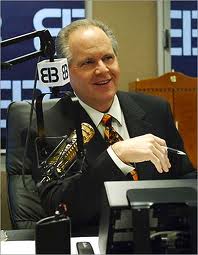A business-managed democracy depends on the mass media to give it legitimacy and perpetuate a business-friendly worldview, in other words to exercise hegemony. The media "is a cultural site where commonsense assumptions are produced, reproduced, and circulated".
the dominant media have a preeminent role in the creation and circulation of public information, in influencing public perception, and in diverting attention from serious issues through spectacle, entertainment, in unending enphasis on consumerism, and, in general, a depoliticisation and dehistoricizing of public policy and cultural conflicts.
The media is shaped by:
 While individual journalists may have left leanings, this is not reflected in national news coverage. This is because “the news is not what reporters report but what editors and owners decide to print” or broadcast.
While individual journalists may have left leanings, this is not reflected in national news coverage. This is because “the news is not what reporters report but what editors and owners decide to print” or broadcast.
Editors are free to cut, edit or drop stories without consulting the journalists who wrote them. There is seldom a need for direct intervention by owners to ensure a corporate or conservative slant to the news. “Rather, managers in business, government, and the media share a common mindset which informs and prioritizes news coverage.”
Most journalists learn which stories are likely to be run and which are not and internalise this message so it becomes a form of self-censorship that not all journalists are even aware of. Those that don’t self-censor do not get very far. Anthony Bevins, who worked on a number of ‘quality’ British papers, wrote in the British Journalism Review:
It is daft to suggest that individuals can buck the system, ignore the pre-set ‘taste’ of their newspapers, use their own news sense in reporting the truth of any event, and survive. Dissident reporters who do not deliver the goods suffer professional death. They are ridden by newsdesks and backbench executives, they have their stories spiked on a systematic basis, they face the worst sort of newspaper punishment—byline deprivation.
The influence of editors, owners, advertisers as well as journalistic conventions are clearly more important to the final result of journalism than the differences between individual journalists otherwise there would be more difference between the way various media outlets report the news.
All these influences determine the news output that most people depend on for information about the world beyond personal experience. Douglas Kellner in his book Television and the Crisis of Democracy argues:
 Reference: Douglas Kellner, Television and the Crisis of Democracy (Boulder: Westview Press, 1990), p. 94-5.
Reference: Douglas Kellner, Television and the Crisis of Democracy (Boulder: Westview Press, 1990), p. 94-5.Democracy presupposes the existence of a public sphere in which vigorous debate on issues of public importance takes place so that decisions can be made on complex and controversial issues. In a system of commercial broadcasting, however, profit imperatives limit the amount of time given to political debate......corporate control severely compromises the democratic functions of television and renders it, first and foremost, an instrument of social control and legitimation rather than a medium of information and democratic debate.
The mass media is extremely homogenous in the news it delivers. In the US most national news is reported from Washington, DC by an ever increasing number of journalists, more than 10,000 in the 1990s, who “track the same individuals, institutions, and events” in a similar way. Kurtz claims that the chorus of voices fails to “challenge the underlying assumptions of official Washington” so that “any argument that lacks significant support in Congress is blown off the radar screen as irrelevant.” Even reporting of local happenings tends to be shaped by a general approach and framework set at a national level and local newspapers often take their lead from national newspapers.
As mainstream journalism has centralised its focus and its personnel, it has developed a commonality in perspective that reinforces its own dominant beliefs and messages, in sharp contrast to the older system of competition among newspapers of differing ideologies. By and large, those journalists who remain geographically outside Washington look to their on-scene counterparts for raw information and, increasingly, opinion and analysis... it is not so very misleading to speak of ‘the news media’ as a singular entity, replete with its own rules, norms, beliefs, leaders, and its own independent ability to shape events.
The difference between network television stations is minimal. Well known media critic Edward Herman explains the reason that the news is reported the same way on every channel, and indeed all over the English speaking world:
The media’s frequently homogenous behaviour arises ‘naturally’ out of industry structure, common sources, ideology, patriotism and the power of the government and top media sources to define newsworthiness and frameworks of discourse. Self-censorship, market forces, and the norms of news practices may produce and maintain a particular viewpoint as effectively as formal state censorship.
Corporate executives and conservative leaders attributed the surge of regulation and the distrust of business of the late 1960s and early 1970s in part to the media and what they perceived as its liberal bias. As part of the political resurgence of conservative ideas they sought to build their own reliable media outlets and to have more influence over existing media organisations. Robert Parry, author of Fooling America, about the Reagan/Bush era, describes a well-financed Nixon conceived plan to build a conservative press:
In the 25 years since Nixon started ‘pushing’ this project, the conservatives have constructed a truly intimidating media machine. It ranges from nationwide radio talkshows by Rush Limbaugh and scores of Limbaugh-wannabes, to dozens of attack magazines, newspapers, newsletters and right-wing opinion columns, to national cable television networks propagating hard-line conservative values and viewpoints, to documentary producers who specialize in slick character assassination, to mega-buck publishing houses that add footnotes to white-supremacist theories and a veneer of respectability to journalistic fabrications, and even to narrowly focused organizations that exist simply to hurt the surviving mainstream journalists who still won’t toe the line.
In the US every conservative organisation from think tanks to front groups produced their own publication or media program. The Wise Use Movement’s Center for the Defense of Free Enterprise bought radio stations and interests in television stations. Think tanks and public relations firms recruited journalists from the mainstream media to their own staffs. Conservative student newspapers were financed as was conservative television programming such as Milton Friedman’s series Free to Choose which was broadcast on the Public Broadcasting Service (PBS). So much oil company money went into sponsoring PBS programmes that it was nick-named the Petroleum Broadcasting Service.
 Many conservative journals have benefited from the millions of dollars ploughed into them by wealthy conservative foundations and corporations. In contrast progressive publications have to survive on readers subscriptions and donations. Beth Schulman, associate publisher of In These Times, documented the $2.7 million in grants going to the conservative magazines The American Spectator, The National Interest, The Public Interest and The New Criterion, whilst the top progressive magazines The Nation, Mother Jones, The Progressive and In These Times, received a total of $269,500 in grants over the same period. (See also: Wealthy Foundations-Media Influence)
Many conservative journals have benefited from the millions of dollars ploughed into them by wealthy conservative foundations and corporations. In contrast progressive publications have to survive on readers subscriptions and donations. Beth Schulman, associate publisher of In These Times, documented the $2.7 million in grants going to the conservative magazines The American Spectator, The National Interest, The Public Interest and The New Criterion, whilst the top progressive magazines The Nation, Mother Jones, The Progressive and In These Times, received a total of $269,500 in grants over the same period. (See also: Wealthy Foundations-Media Influence)
Conservative columnists were encouraged and nurtured while progressive journalists and their editors were pestered and subjected to complaints. Various conservative media watch organisations were set up for this purpose, such as Accuracy in Media (AIM) founded to “expose liberal bias in the media,” and the Media Institute, which included executives from major corporations such as Procter and Gamble and Mobil Oil on its national advisory board.
In 1991 Eric Alterman in Rolling Stone, revealed a ‘Communications Plan’ by Newt Gingrich and his colleagues to “create our own propaganda machine for the widespread distribution of broadcast, print and computer communications to supply our activists and potential followers with ideas, information and rhetoric.” According to Parry this has become a “right-wing media machine” which sets the agenda for much of the national media “deciding which ideas and individuals are accepted and which are marginalised.” This media machine is credited with making playing a major role in the 1994 Republican takeover in Congress.
Perhaps the most significant development however was the rise of the conservative talk show. Since the early 1980s the numbers of talk radio stations in the US have quadrupled to over 800. The abolition of the ‘fairness doctrine’ in 1987, which “required broadcasters to present fair coverage of opposing views on major public issues,” helped in the evolution of the more strident, right wing stations. “Talk radio has become a potent conservative marketing tool” says Howard Kurtz, author of Hot Air, a book on talk shows.
 An example of the use of talk shows to defeat a bill occurred at the end of 1994. A bill to prevent politicians from accepting perks and gifts from paid lobbyists and requiring paid lobbyists to disclose activities such as organising ‘grassroots’ protests, passed in the House. But then, according to Kurtz, Newt Gingrich managed to get well-known radio host Rush Limbaugh (pictured) to oppose the bill in his shows, labelling the bill as ‘anti-American’ and ‘unconstitutional’. He told his listeners the bill would require citizen’s groups to disclose membership lists (which the bill’s sponsors denied). The members of the Senate were swamped with phone calls and forty four senators changed their votes, defeating the bill.
An example of the use of talk shows to defeat a bill occurred at the end of 1994. A bill to prevent politicians from accepting perks and gifts from paid lobbyists and requiring paid lobbyists to disclose activities such as organising ‘grassroots’ protests, passed in the House. But then, according to Kurtz, Newt Gingrich managed to get well-known radio host Rush Limbaugh (pictured) to oppose the bill in his shows, labelling the bill as ‘anti-American’ and ‘unconstitutional’. He told his listeners the bill would require citizen’s groups to disclose membership lists (which the bill’s sponsors denied). The members of the Senate were swamped with phone calls and forty four senators changed their votes, defeating the bill.
Talk radio has been used in this way to defeat other regulatory measures:
there was no easy antidote to the misinformation and distortion that often accompanied lobbying campaigns and could now be broadcast coast to coast. The creaky machinery of Congress always made it easier to block some piece of legislation than to forge a consensus, and the conservatives now had a powerful weapon at their disposal. When enough radio hosts lined up behind them, they could talk a bill to death.